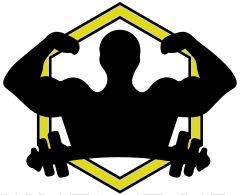What is whey protein?
Milk contains two types of protein; Casein and Whey. Whey is the watery part of milk that separates during cheese production. Imagine the watery mess on top of a freshly opened yoghurt – that’s whey, which needs to go through a specific process to transform it into a powdered supplement. Whey is absorbed quickly once consumed making it ideal to consume post-workout.
Who is whey for?
Anyone trying to increase their protein intake while keeping to keep their carbohydrate and fat intake low. However, as whey is made from milk, any allergies or intolerances may mean it is not suitable for some individuals (although lactose is normally low enough to not be an issue). Whey is not a substitute for a good diet; the majority of protein in your diet should come through food.
What about plant based protein?
Not all proteins are created equal. Whey has a better profile and is higher in amino acids than plant based proteins. So much so that plant based proteins are not considered “complete” proteins which means many don’t contain the 9 essential amino acids (except soy). Plant based protein still provides protein and is a great substitute for vegan or lactose intolerant athletes and still “does the job”.
Which whey is best??
There are three main types of whey protein that are absorbed quickly once consumed; Concentrate, Isolate and Hydrolysed Isolate. You can also buy “Casein” or “milk” protein supplements which are also made from milk which are slow release proteins. Supplement creators have also created protein “blends” which are supplements that contain more than one type of protein. With all of the choice, it’s no wonder people find it hard to pick a supplement right for them so lets look at each in more detail.
Whey Concentrate
Concentrate normally has 75% to 80% protein content meaning a 25g serving will pack up to 20g of protein. The rest will form mainly fat and carbohydrates. It’s often the cheapest form of whey you can buy and has a great amino acid profile. It is absorbed quickly once consumed (around 2 to 2.5 hours) so ideal to take post workout to immediately aid recovery and growth. When comparing whey concentrate supplements, do keep an eye on the protein content as some have been known to go below 75%. Whey mixes easily and often tastes great.
Whey Isolate
Isolate undergoes slightly different processing which results in up to 97% protein content meaning a 25g serving will pack up to 23.75g protein (typically 90% is normal for isolate). This is particularly useful for someone looking to really restrict their calorie, carbohydrate and fat intake. Isolate is also lower in lactose. This does come at an increased cost to the buyer so before opting for isolate, ask yourself if the nutritional subtleties will make a difference to you. Isolate absorbs at at similar rate to whey concentrate at 2 to 2.5 hours.
Whey Hydrolysed Isolate (Hydrolysate)
Hydrolysate is the result of breaking larger proteins down into smaller proteins for quicker absorption (around 1 to 1.5 hours) while maintaining a high protein content. Great for post-workout due to your muscles getting the nutrients they need immediately. The naturally occurring digestive enzymes also help speed up protein synthesis.
Protein Blends
Supplement manufacturers are always innovating and some are creating supplements that blend different types of proteins together. This is to take advantage of the benefits of each type of protein (this is necessary for plant based protein to ensure the protein provides all essential amino’s). Blends are sometimes tricky to asses as you don’t often know how much concentrate there is terms of grams for example. Generally a blend will lay somewhere between a concentrate and an isolate in terms of quality of ingredients.
Anything to look out for?
2 things.
Firstly, keep an eye out for some cheaper brands as some sneak plant protein into their whey blends. Soy protein has a very high protein content so it’s used to bump up the percentage protein figure but it is of a lower quality protein. It is a complete protein but the amino profile isn’t optimal so the bioavailability is worse than whey (your body absorbs less of the protein).
Secondly, look out for “amino spiking”. This is the process of adding single cheaper amino’s to protein in order to cut costs while keeping the protein % high. Creatine will count towards protein when lab tested too so often good to avoid that in your protein too. This is bad as your body needs complete protein to repair and recover. Take a look at this ingredient list:

The picture above is some protein from a company called Matrix. They list this protein as 86% protein content, but when you look at the ingredients, firstly you can see it has soya protein in there but worse than that is the “Amino Acid Matrix”, sounds good right? And then it’s got some lovely amino’s listed alongside creatine, great! I’m afraid not, these individual cheaper amino’s have been added in place of quality whey. For all we know, that 86% protein is 50% whey, 20% soya and 26% spiked amino’s which is short for “don’t buy this sh!t”.
For other milk based protein include Casein, Recover Blends with carbohydrates and Diet Protein. Read more here.
There are many supplements out there, but you’ve come to the right place to educate yourself and choose the best supplement for your training goals.
Further reading you may be interested in:
- Protein Overview
- Plant (vegan) Protein
- Other protein (Casein…)
- Amino Acids
- BCAAs
